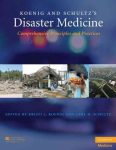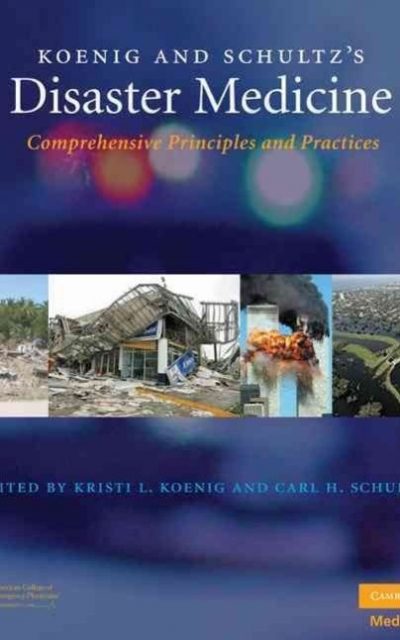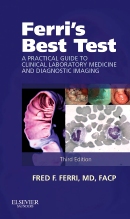 Editors: Christi L. Koenig, MD; and Carl H. Schultz, MD
Editors: Christi L. Koenig, MD; and Carl H. Schultz, MD
Publisher: Cambridge University Press – 667 pages
Book Review by: Nano Khilnani
Disaster medicine has evolved over the decades. Although not offered in medical schools as a specialty, it requires the close, coordinated efforts of specialists from disparate and often unrelated fields to effectively handle a mass disaster or emergency to save the lives of as many people as possible.
“Today, we know these diverse disciplines must work seamlessly together and are essential for disaster preparedness, response, mitigation and recovery,” writes Dr. Richard Carmona, a trauma surgeon and the 17th Surgeon-General of the United States, in his Foreword to this book.
The study of disaster medicine is not an easy task because of “the absence of a standard definition of disaster, much less a uniform concept for an academic discipline of disaster medicine,” writes Dr. Kristi L. Koenig in the Preface. She points out that there is an urgent need to codify this emerging discipline and create standards.
She asks “what then is disaster?” and points to several definitions, including the one by the World Health Organization as a “sudden ecological phenomenon of sufficient magnitude to require external assistance.” This definition points out to the fact that the consequential effects of the disaster are so large that they cannot be handled adequately by the immediate and locally available resources, so there is urgent need to tap into additional resources.
In most cases the consequential effects have to do with caring for critically-injured people who may die unless adequate medical treatment is provided to them urgently.
Seventy-nine specialists in medicine, nursing, public health, defense, crisis management, disaster assistance and management, education, emergency preparedness, homeland security, law, pharmacology, psychology, simulation training, transportation, victim recovery, and other relevant fields, wrote the 39 chapters of this book. Some of them are employed in various branches of military service.
Among the medical specialties of the editors and authors are: anesthesiology, burn medicine, disaster medicine, emergency medicine, environmental and occupational medicine, epidemiology, hematology, infectious diseases, and neurology, ophthalmology, and psychiatry. Surgical specialists include those in burn surgery, as well as orthopedic, plastic, and reconstructive surgeons.
The 79 contributors to the content of this book are from all over the United States, and eight other countries: Australia, Belgium, Ireland, Israel, Singapore, Sweden, Taiwan, and the United Kingdom.
This book has been written principally for students and practitioners in the fields mentioned above, both medical and non-medical. You will learn basic concepts in disaster medicine, and current state-of-the-art in fields relating to, or covered by the chapter title, and much more.
The knowledge base in disaster medicine has in recent years, grown massively in breadth and depth, so this book is quite extensive in coverage. Within its nearly 700 pages are 39 chapters in subject matters ranging from:
- Antibiotics to vaccines, on the control of infectious diseases
- Crisis emergency risk communication to decontamination to quarantine to transportation strategies, on operational issues
- Biological to chemical to fire to explosions to nuclear and radiological events, on their clinical management
- Natural disasters such as cyclones, to earthquakes, to floods, to tornadoes, to tsunamis, to volcanic eruptions, and to winter storms, on environmental advents
However, the 39 chapters are neatly and simply organized around just three Parts (named below) in order to not make it overwhelming for you, the user of this one-of-a-kind, very valuable text.
- Conceptual Framework and Strategic Overview
- Operational Issues
- Clinical Management
- Section A: CBRNE and HAZMAT
- Section B: Environmental Events
The editors Drs. Kristi L. Koenig and Carl H. Schultz, by describing the essential concepts of disaster medicine in this book, are laying its academic foundation, and moving it forward as an emerging specialty, writes Dr. Carmona. He states: “…the book reaches beyond state-of-the-art discussions to identify important areas that require immediate attention, hence laying the research agenda for the future. There is a focus on science and outcomes rather than opinions and outcomes.”
Each chapter has the basic components named below. This type of organization, we believe, makes it easier for you to absorb the material within each chapter:
- Chapter Title
- Chapter Author(s)
- Overview
- Topics and Subtopics
- Current State-of-the-Art
- Recommendations for Future Research
- References
This text is a pioneering effort to build the foundation for the new and growing medical specialty of disaster medicine. It is an authoritative work by numerous world-renowned medical and non-medical experts in fields that treat the victims of disasters and emergencies.
Editors:
Christi L. Koenig, MD, FACEP is Professor of Emergency Medicine and Director of Public Health Preparedness at the University of California in Irvine. She is also Director of the International Disaster Medical Sciences Fellowship. She is an international recognized expert in the fields of homeland security, disaster and emergency medicine, emergency management, and emergency medical services.
During the U.S. terrorist attacks of 9/11, she served as National Director of Emergency Management Office for the Federal Department of Veterans Affairs. With a strong health policy and academic background including more than 80 peer-reviewed publications and more than 300 invited lectures in more than a dozen countries, she is widely sought for presentations at regional, national, and international forums.
Carl H. Schultz, MD, FACEP is Professor of Emergency Medicine and Director of EMS and Disaster Medical Sciences Fellowship at the University of California School of Medicine. He is Director of Disaster Medical Services in the Emergency Department at the University of California, Irvine Medical Center. He is an international recognized expert and researcher in the fields of disaster and emergency medicine.
He has more than 80 peer-reviewed publications, and his investigations have resulted in two first-author publications in the New England Journal of Medicine. He chairs the Disaster Preparedness and Response Committee of the American College of Emergency Physicians and has served as a consultant for the U.S. Department of Defense, the Joint Commission, and the State of Israel. Dr. Schultz holds faculty appointments at Universities in Belgium and Italy.







